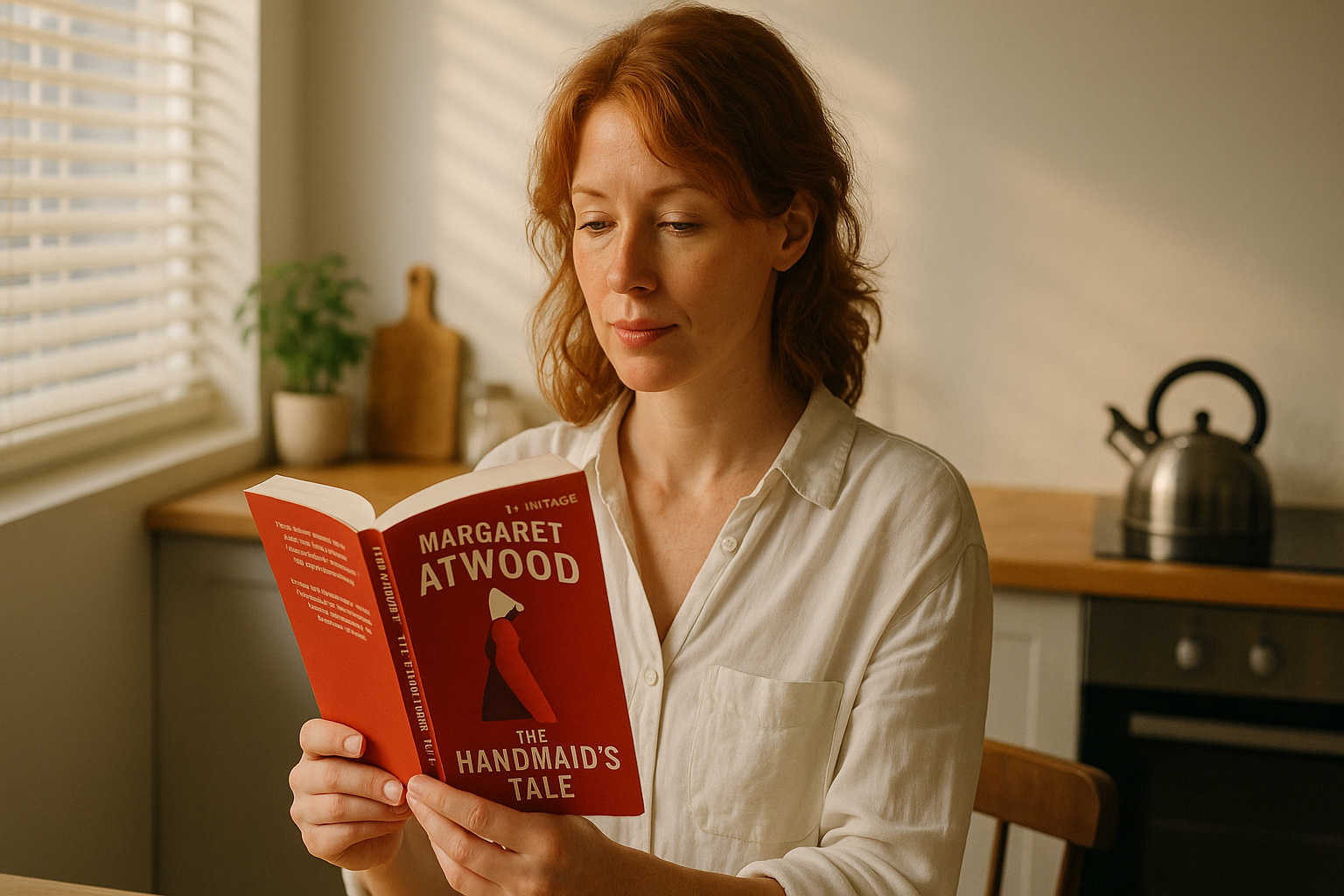A Visionary Feminist Dystopia
Explore Margaret Atwood’s “The Handmaid’s Tale”, a fascinating dystopia that highlights the struggles for female autonomy and the dangers of extremism. Discover why this novel remains more relevant than ever in today’s world.
Introduction
Published in 1985, “The Handmaid’s Tale” is a dystopian novel by Canadian author Margaret Atwood. Set in the Republic of Gilead, a totalitarian regime that has replaced the United States of America, the book explores themes of power, resistance and identity through the eyes of Defred, a servant whose sole function is reproduction. This prophetic and disturbing work questions the very foundations of freedom and female autonomy in the not-too-distant future.
Summary and structure
The story follows Defred’s daily life in the Republic of Gilead, where women are categorized and assigned to specific roles strictly controlled by the state. As a servant, Defred is subjected to constant oppression and surveillance, but harbors memories of a time before Gilead, when she had a family, a job and an identity of her own. The novel alternates between Defred’s present in Gilead and her memories of the past, creating a poignant contrast between lost freedom and totalitarian reality.
Themes and analysis
“The Handmaid’s Tale” explores the systemic repression of women and the use of the female body as a political instrument. Atwood examines how totalitarian regimes can seize reproductive control to exert their power, making the theme of bodily autonomy particularly resonant. Resistance, both individual and collective, is a common thread, highlighting the cracks in Gilead’s seemingly impenetrable façade. Atwood also weaves in reflections on the importance of memory and narrative as means of resistance and self-preservation.
Characters and development
Defred, with her first-person point of view, is a complex and deeply human character. Her inner struggle to maintain her identity and humanity in a world that seeks to take them away from her is at the heart of the novel. Secondary characters, such as the Commander, Serena Joy, and Moira, are richly developed, each reflecting the different ways in which individuals adapt, resist or wallow in the Gilead regime.
Impact and reception
On publication, “The Handmaid’s Tale” was recognized as a visionary work, anticipating discussions on feminism, reproductive rights and state control over the female body. Its relevance has only grown over the years, particularly in the contemporary political and social climate. Adapted into a TV series in 2017, the novel has reached a new audience, sparking discussions about the parallels between Atwood’s fiction and reality.
Why read this book?
“The Handmaid’s Tale” is essential for understanding the dangers of extremism and the importance of fighting for individual rights and freedoms. The novel is a warning against complacency and a call to vigilance in the face of threats to autonomy and identity. For fans of dystopian literature, this is a must-read that combines powerful storytelling with thematic and emotional depth.
Conclusion
In “The Handmaid’s Tale”, Margaret Atwood has created a frightening but essential dystopia, directly challenging the reader on questions of power, resistance and identity. More than just a novel, it’s a mirror held up to our society, prompting us to reflect on our future and the values we wish to defend.
Latest Reviews & Analyses
Stay Updated with Our Latest Reviews
Join our community to receive exclusive insights and updates on groundbreaking literary works.
Find Your Next Literary Adventure
What Our Readers Are Saying

Maria Chen
“An enlightening journey through the pages of literary brilliance. A must-visit for any book lover!”





